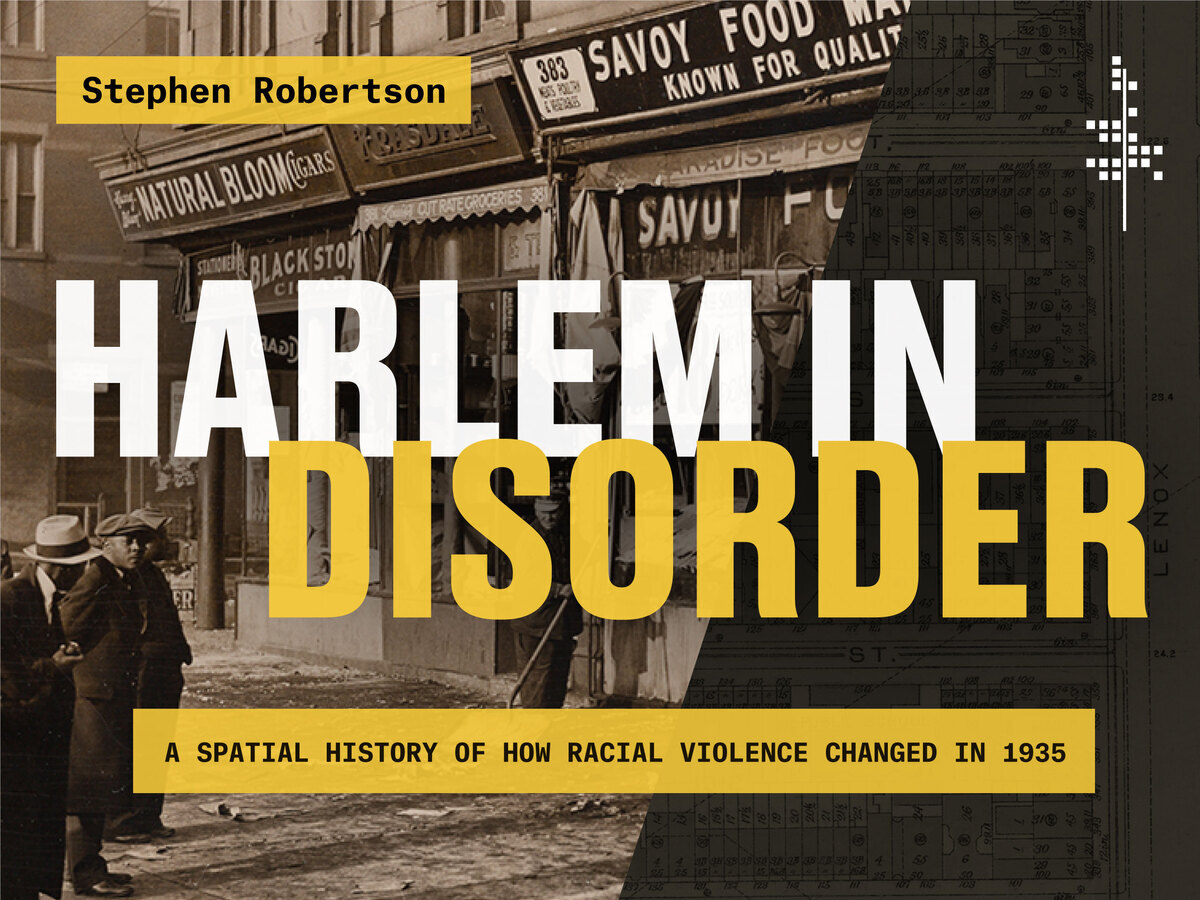Harlem in Disorder published
On March 5, 2024, my open access digital monograph, Harlem in Disorder: A Spatial History of How Racial Violence Changed in 1935, was published by Stanford University Press. The cover copy reads:
The violence that spread across Harlem on the night of March 19, 1935 was the first large-scale racial disorder in the United States in more than a decade and the first occurrence in the nation’s leading Black neighborhood. However, as many observers pointed out, the events were “not a race riot” of the kind that had marked the decades after the Civil War. Racial violence took a new form in 1935.
Through a granular analysis of those events and the mapping of their locations, Harlem in Disorder reveals that Harlem’s residents participated in a complex new mix of violence that was a multifaceted challenge to white economic and political power. Tracing the legal and government investigations that followed, this project highlights how that violence came to be distorted, diminished, and marginalized by the concern of white authorities to maintain the racial order, and by the unwillingness of Harlem’s Black leaders and their white allies to embrace fully such direct forms of protest.
Focused on capturing rather than simplifying the complexity of the new form of racial violence, Harlem in Disorder is a multi-layered, hyperlinked narrative that connects different scales of analysis: individual events, aggregated patterns, and a chronological narrative. Its structure foregrounds individual events to counter how data can dehumanize the past, and to make transparent the interpretations involved in the creation of data from uncertain and ambiguous sources.
The project originated at the University of Sydney, with the support of the Australian Research Council, and was completed at George Mason University, with the support of the National Endowment of the Humanities, so my acknowledgements span the Pacific as well as more than a decade. The form of the argument evolved over that time from a focusing on mapping the events of the disorder to include a structure intended to capture the complex mix of events on the map, retain the humanity of those involved, and highlight the historical process I used to construct the narrative and interpretation. The label I settled on for that form was a digital monograph: while its pages do not echo a print page or exist in a print form, it is a longform study that makes a sustained argument based on in-depth research. In other words, it is a book. (More on that later).
